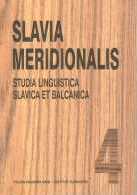Концепт „наде” у српском језику
The concept of „nada” („hope”) in Serbian
Author(s): Radoslava TrnavacSubject(s): Language and Literature Studies
Published by: Instytut Slawistyki Polskiej Akademii Nauk
Summary/Abstract: The paper reviews the syntactic-semantic structures including the realization of the relative temporal determination of the sentence predication by a nominal form – nondeverbal and deverbal – in the genitive case in the standard Serbian language. The author presents the semantic types (temporal identification, temporal quantification, temporal frequency) and corresponding syntactic models, discussing, in relevant cases, their special pragmatic characteristics. This paper deals with the analysis of a part of the semantic field of ‘hope’ in the contemporary Serbian language. The oncoming analysis is an illustration of the implementation of the semantic prime devised by Anna Wierzbicka to show the meanings of the verb „nadati se” (to hope), its synonyms, antonyms, as well as the Christian meaning of' „hope”. The classification of the meanings of the verb „nadati se” is looked at in the context of three different spheres of Apresjan's „picture of the world”, these being emotional, intellectual, and illocutionary.
Journal: Slavia Meridionalis
- Issue Year: 2004
- Issue No: 04
- Page Range: 215-246
- Page Count: 32
- Language: Serbian

